The Kentia Palm, scientifically known as Howea Forsteriana, is a stunning indoor plant that brings a touch of the tropics into your home. With its graceful and elegant appearance, this slow-growing palm is sure to add a touch of natural beauty to any space.
When grown in its natural habitat, the Kentia Palm can reach impressive heights of up to 12 meters. However, when cultivated indoors, it typically grows to a more manageable height of up to 3 meters, making it suitable for various room sizes.
Appearance of Kentia Palms

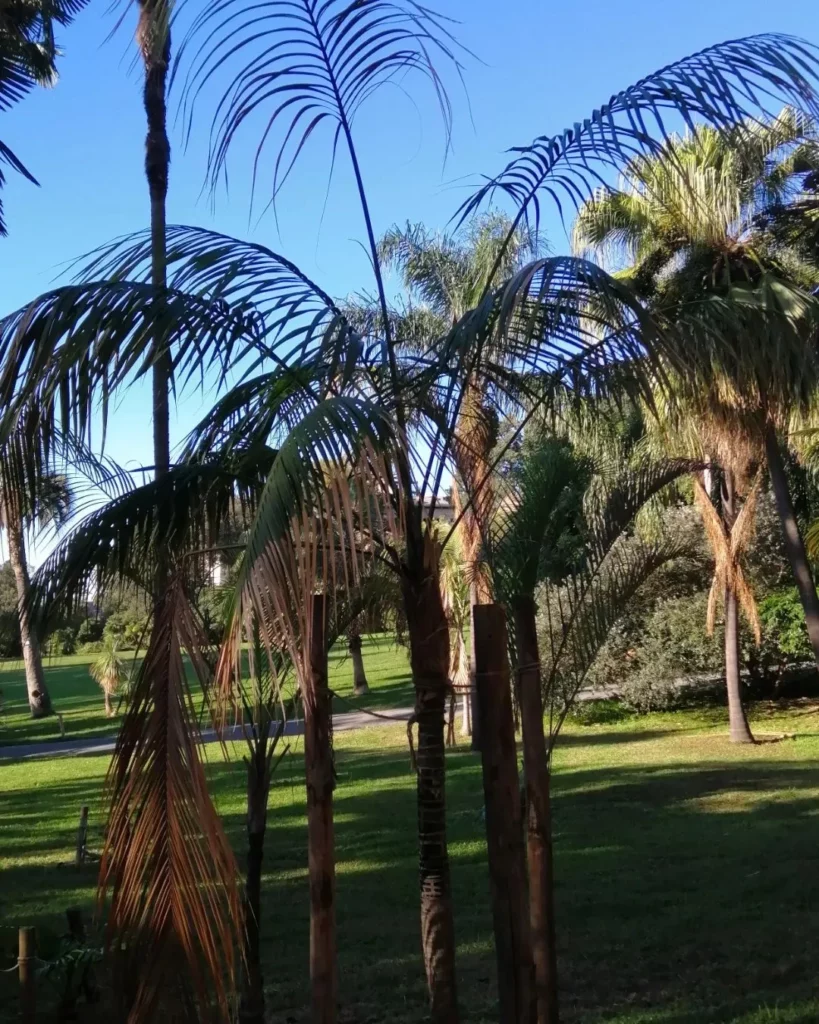
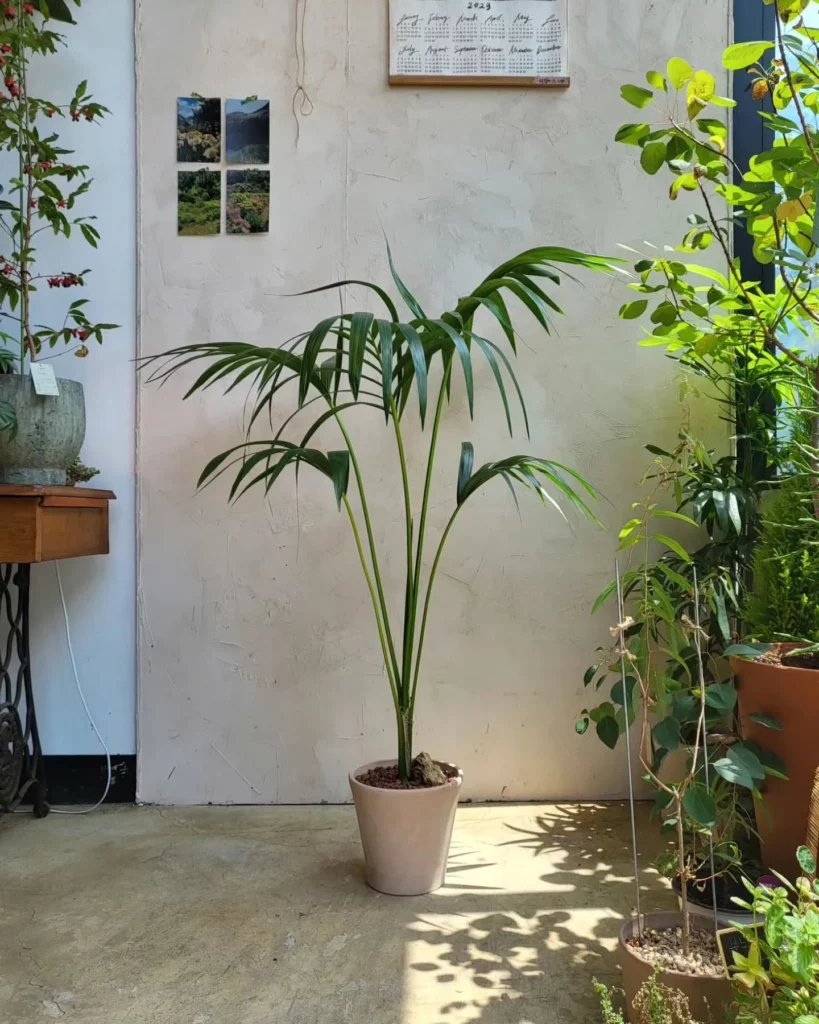
One of the most striking features of the Kentia Palm is its slender trunk, which can reach a diameter of up to 30 cm. While the trunk starts off green when young, it gradually matures into a rich brown color over time, adding depth and character to the plant’s overall appearance.
Perhaps the most captivating aspect of the Kentia Palm is its foliage. The plant boasts beautiful fronds with a glossy, dark green color that emanates a tropical vibe. These fronds arch gracefully, creating an eye-catching display and giving the Kentia Palm its signature look.
The glossy foliage not only adds to the plant’s aesthetic appeal but also contributes to its ability to purify the air. Kentia Palms are known for their air-purifying properties, making them an excellent choice for creating a healthier indoor environment.
| Common Name | Scientific Name | Height Range (Indoor) | Trunk Diameter (at maturity) | Foliage |
|---|---|---|---|---|
| Kentia Palm | Howea Forsteriana | Up to 3 meters | Up to 30 cm | Glossy, dark green fronds |
Light Requirements for Kentia Palms

Kentia Palms, like many indoor plants, have specific light requirements to ensure their optimal growth and health. Understanding these requirements will help you create the perfect environment for your Kentia Palm to thrive.
Kentia Palms prefer medium to bright indirect light. This means that they should be placed in a well-lit area away from direct sunlight. Direct sunlight can scorch the leaves of your Kentia Palm, causing damage and hindering its growth. Placing the plant near a window or a light source that provides indirect sunlight is ideal.
While Kentia Palms can tolerate medium-low light conditions, it’s important to note that they may not grow as well or develop their signature lush foliage in such conditions. If your indoor space lacks natural light, you can supplement it with artificial lighting. Consider using fluorescent grow lights placed at a suitable distance above the plant to provide the required light intensity.
Remember, light is essential for photosynthesis, the process through which plants convert light energy into chemical energy to support their growth. Insufficient light can result in weak, spindly growth, while excessive light can lead to leaf scorching and damage. Finding the right balance of light for your Kentia Palm is key to keeping it healthy and vibrant.
| Light Conditions | Suitable for Kentia Palms? |
|---|---|
| Medium to bright indirect light | Yes |
| Medium-low light | Tolerated, but growth may be slower |
| Direct sunlight | Avoid, as it can scorch the leaves |
Watering Kentia Palms
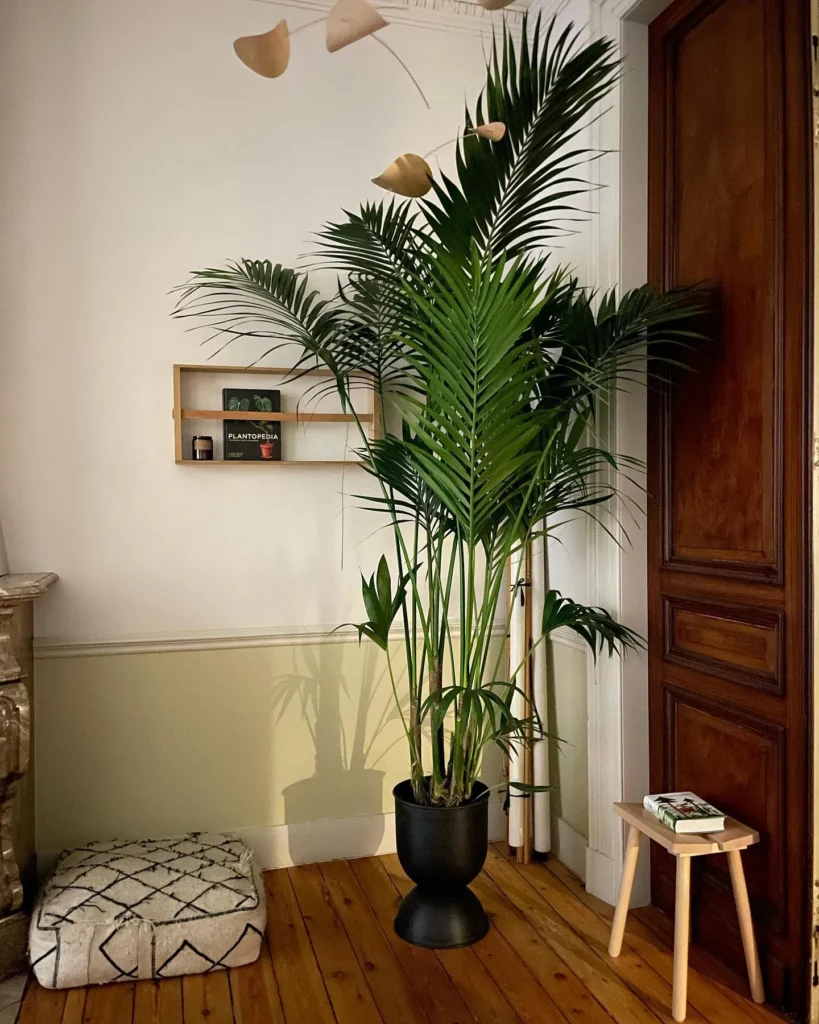
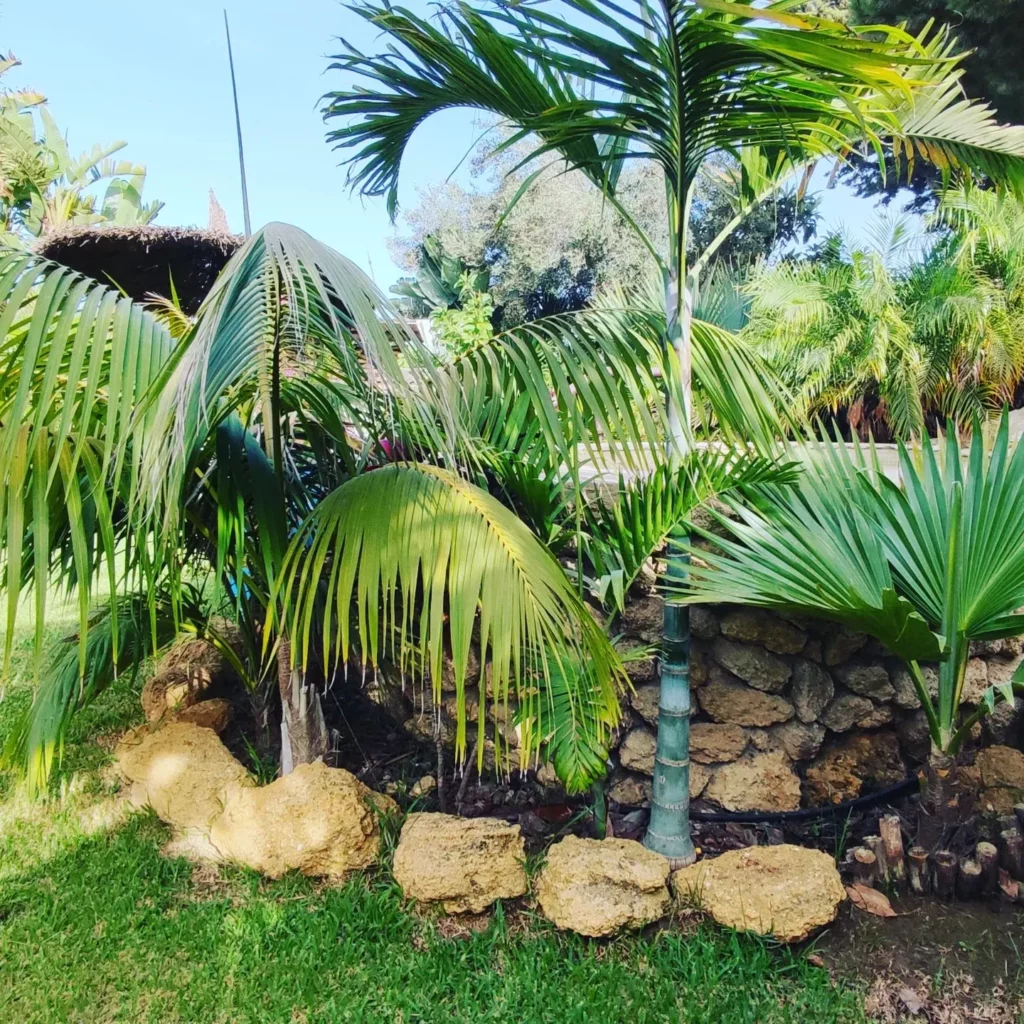

Proper watering is crucial for the health and well-being of your Kentia Palm. Providing the right amount of water ensures that your plant thrives and avoids common problems such as root rot or dryness.
Moist but not Waterlogged Soil
The key to watering a Kentia Palm is to keep the soil consistently moist but not waterlogged. Soggy soil can suffocate the roots and lead to root rot, while dry soil can cause the leaves to turn yellow or brown at the tips.
No products found.
Here’s how you can find the perfect balance:
- Check the Moisture Level: Before watering, check the moisture level of the soil. Insert your finger about 1-2 inches into the soil. If it feels dry at this depth, it’s time to water your Kentia Palm.
- Watering Technique: Fill a watering can with room temperature water and gently pour it around the base of the plant until the water starts to drain from the bottom of the pot.
- Maintain Consistency: Stick to a regular watering schedule to provide consistent moisture to your Kentia Palm. Depending on the environment and climate, you may need to water once or twice a week.
Increasing Humidity
In its natural habitat, the Kentia Palm thrives in high humidity. Mimicking these conditions can benefit your indoor plant’s health and growth. Here’s how you can increase humidity:
- Misting: Regularly mist the foliage of your Kentia Palm using a spray bottle filled with filtered or distilled water. This helps to increase humidity levels around the plant.
- Pebble Tray: Place a tray or saucer filled with water and pebbles near the plant. As the water evaporates, it creates a humid microclimate around the Kentia Palm.
Common Watering Mistakes to Avoid
| Mistake | Effect |
|---|---|
| Overwatering | Root rot, yellowing leaves, and mold formation. |
| Underwatering | Dry and brown leaf tips, wilting, and stunted growth. |
| Inconsistent Watering | Fluctuating soil moisture levels, stress, and poor plant health. |
| Watering with Cold Water | Shock to the plant’s roots and decreased nutrient absorption. |
Fertilizing Kentia Palms
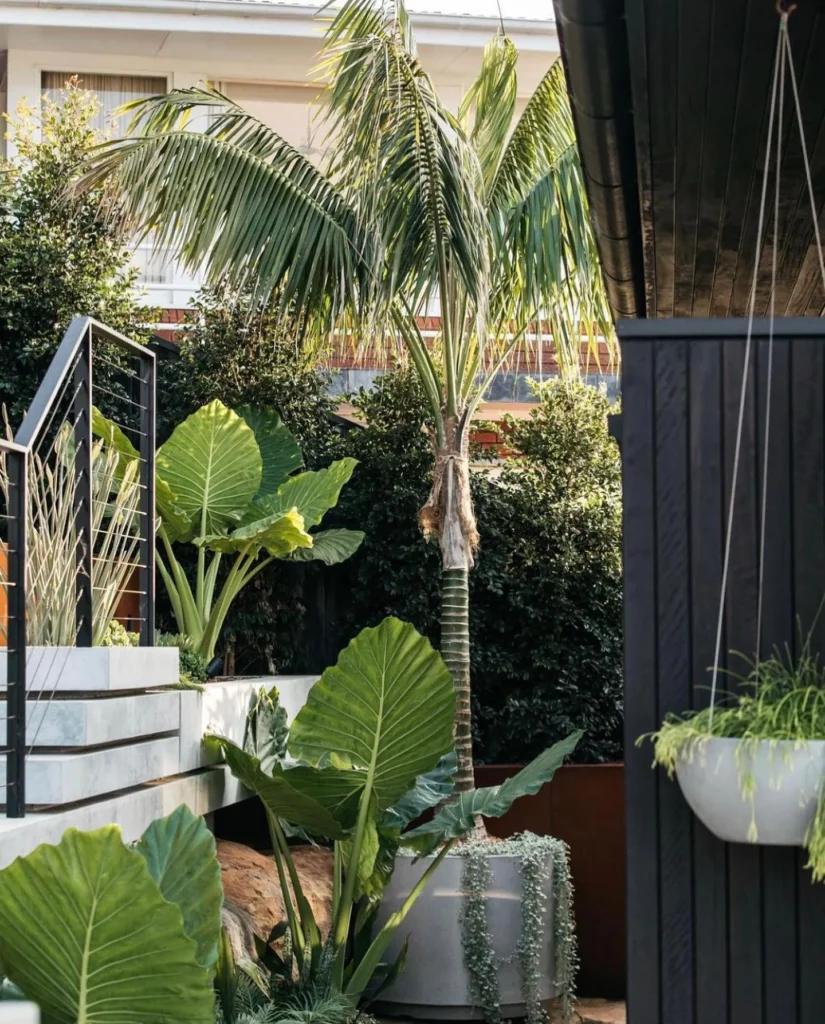
Proper fertilization is essential for ensuring the healthy growth and development of Kentia Palms. Despite being slow growers, these elegant indoor plants benefit from occasional feeding to maintain their lush appearance. By following the right fertilization practices, you can enhance the vitality of your Kentia Palm and enjoy its beauty for years to come.
When it comes to fertilizing Kentia Palms, it’s important to remember that they are not heavy feeders. Fertilize your plant 1-2 times per month during the spring and summer seasons when it is actively growing. Choose an indoor plant food specifically formulated for slow-growing plants to provide them with the essential nutrients they need.
An effective fertilization technique to consider is foliar feeding. This involves applying a diluted liquid fertilizer directly to the leaves of the plant. The leaves absorb the nutrients, resulting in improved growth and vigor. Foliar feeding can be done throughout the year to promote the overall health and well-being of your Kentia Palm.
However, it’s crucial not to over-fertilize your Kentia Palm. Excessive fertilization can lead to nutrient burn, causing damage to the plant’s roots and foliage. Always follow the instructions provided by the manufacturer and dilute the fertilizer to the recommended strength.
| Fertilization Tips for Kentia Palms |
|---|
| Use an indoor plant food formulated for slow-growing plants |
| Fertilize 1-2 times per month during the spring and summer seasons |
| Consider foliar feeding to enhance nutrient uptake |
| Be cautious not to over-fertilize, as it can harm the plant |
Potting Kentia Palms
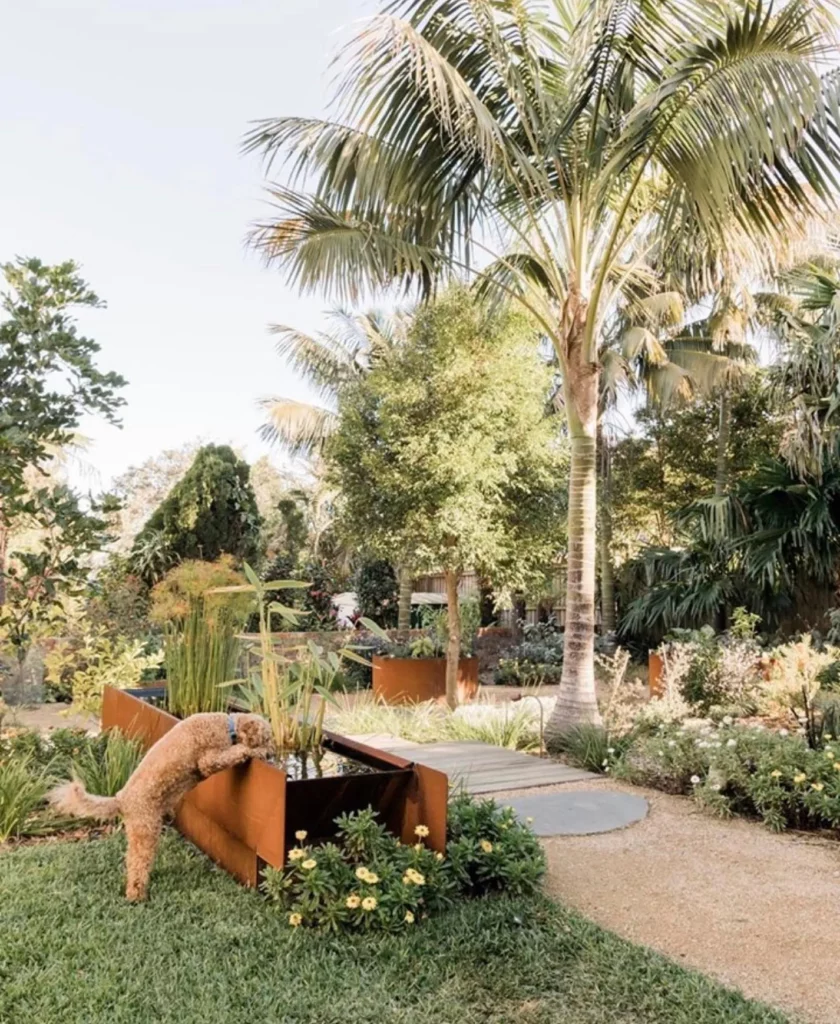
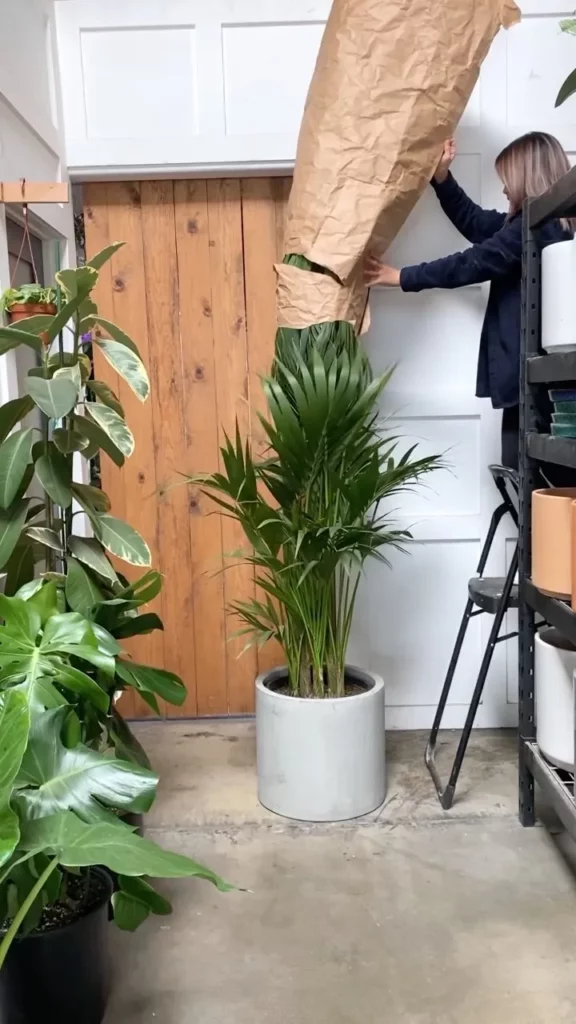
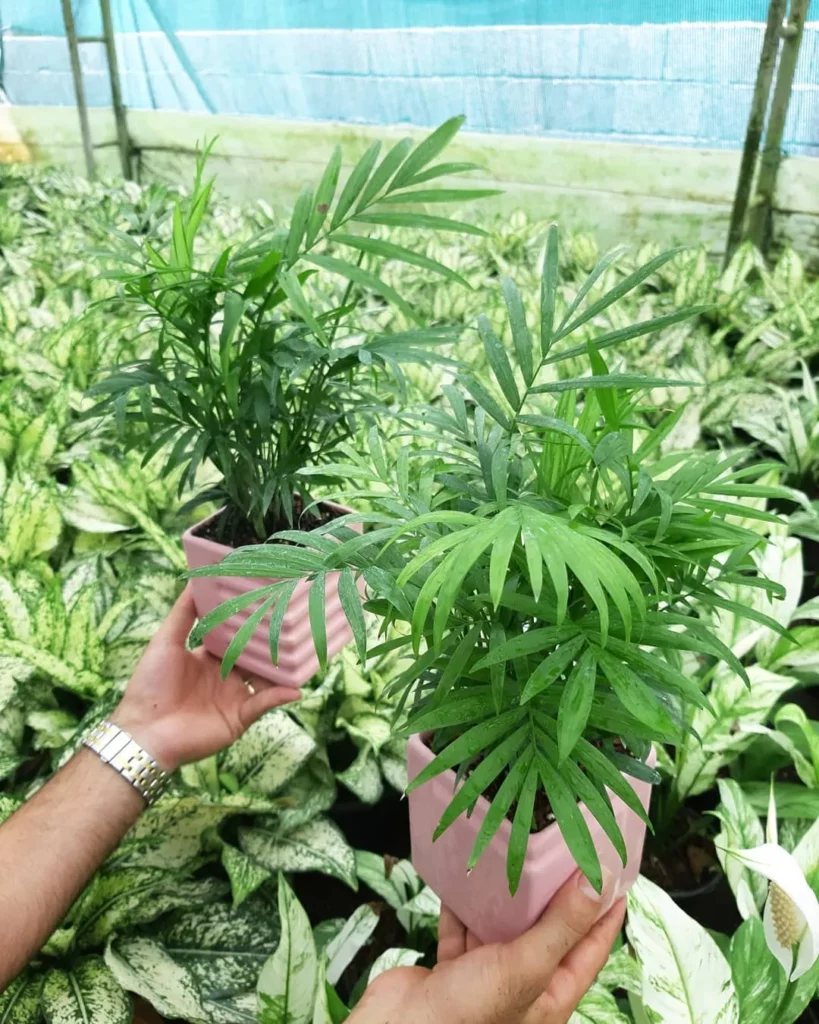
Avoid repotting a Kentia Palm unless absolutely necessary. These plants have delicate roots and prefer to remain undisturbed. Repotting should be done only when the plant is at risk of root rot or becomes rootbound.
When it’s time to repot your Kentia Palm, choose a pot that is slightly larger in diameter than the current one. This will allow the roots to spread and grow comfortably. Make sure the new pot has drainage holes to prevent waterlogging and root rot.
No products found.
When repotting, use well-draining soil specifically formulated for palms. This type of soil allows excess water to drain away and helps prevent the roots from sitting in saturated soil, which can lead to root rot. Avoid touching the roots as much as possible during the repotting process to minimize stress to the plant.
After repotting, water the plant thoroughly and place it in a location with indirect sunlight to allow it to adjust to its new environment.
Propagation of Kentia Palms
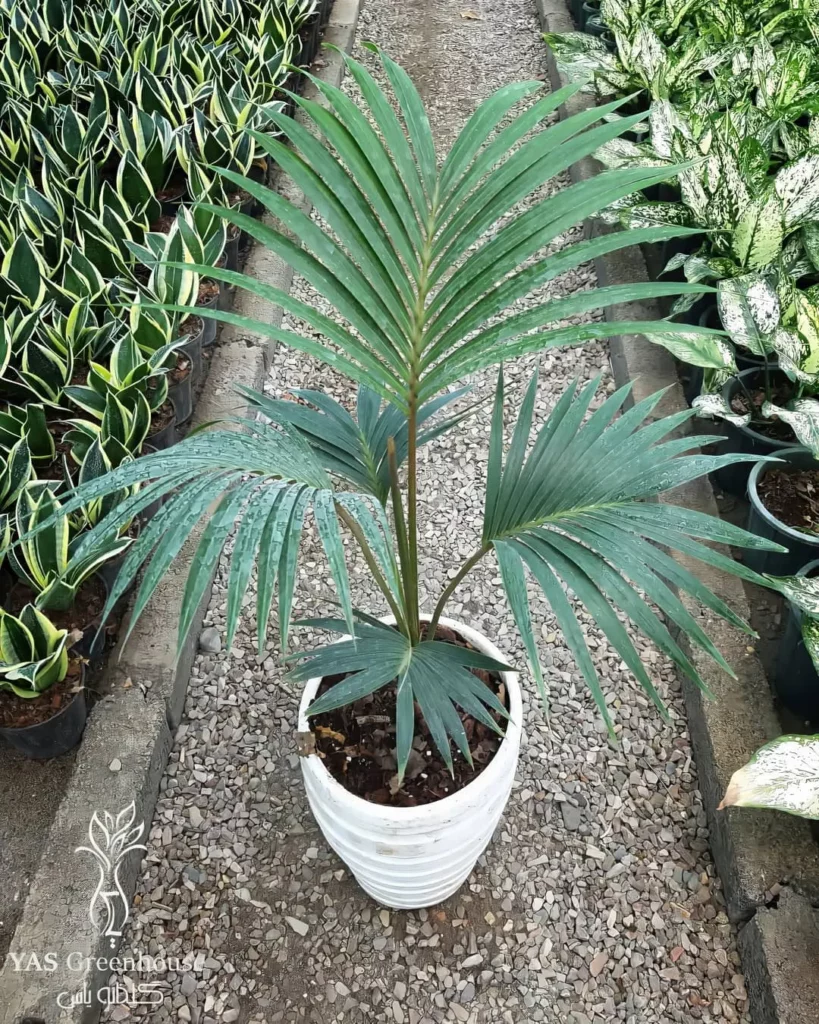
Kentia Palms, also known as Howea Forsteriana, can be propagated through the germination of seeds. However, it is important to note that propagating Kentia Palms indoors can be quite challenging. It is advisable to leave the propagation process to professional growers who have the experience and expertise to achieve successful results. The germination of seeds requires specific conditions and care to ensure successful sprouting, making it a complex process for most home gardeners.
Germinating seeds for Kentia Palms requires attention to detail and adherence to specific steps. While it may be tempting to try your hand at propagation, it can be time-consuming and may not yield the desired results. Instead, focus on caring for your mature Kentia Palm to ensure its longevity and overall health.
Professional Propagation Techniques
If you are truly interested in propagating Kentia Palms, it is recommended to consult with professional growers who specialize in this particular species. They possess the knowledge and resources to maximize the chances of successful propagation. These experts follow specialized techniques such as seed stratification and controlled environments to create optimal conditions for Kentia Palm seed germination.
Focus on Care and Maintenance
While propagating Kentia Palms may be a complex endeavor, focusing on the care and maintenance of existing plants can be equally rewarding. By providing the proper amount of light, water, and nutrients, you can ensure the healthy growth and development of your Kentia Palm. Remember to monitor for signs of pests or diseases and take appropriate action to maintain the plant’s vitality.
| Propagation Method | Suitability |
|---|---|
| Seed Germination | Challenging |
| Professional Propagation | Recommended |
Growth and Development of Kentia Palms


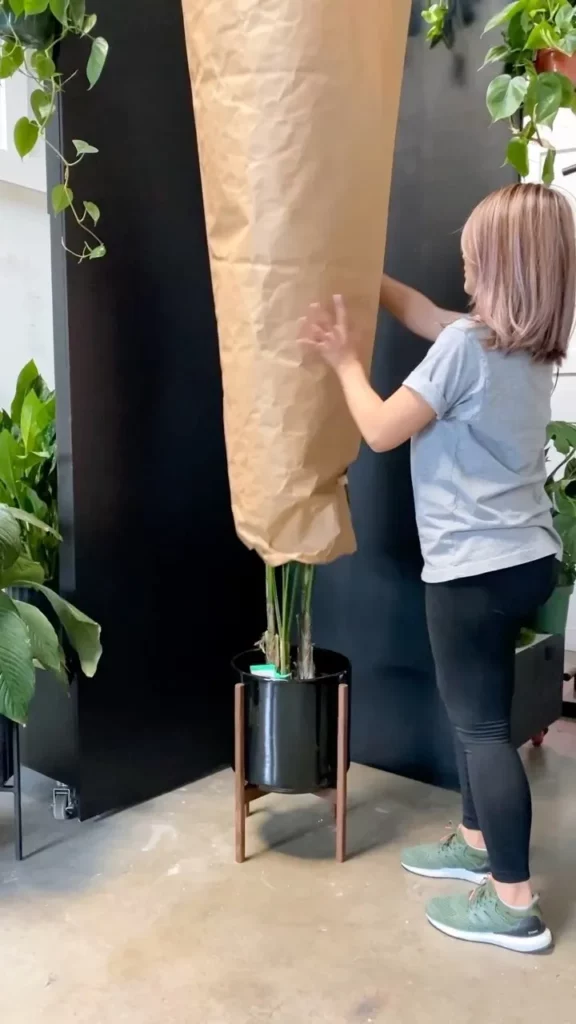
Kentia Palms are known for their slow growth, making them an excellent choice for indoor greenery enthusiasts seeking a low-maintenance plant. While other plants may flourish rapidly, the Kentia Palm’s unhurried growth provides a sense of tranquility and longevity to any space. Understanding the growth and development of these palms is crucial for ensuring their optimal health and beauty.
As a slow grower, a Kentia Palm requires patience. It can take several years for the plant to reach its full potential, with some specimens growing up to 12 meters tall in their natural habitat. However, when cultivated indoors, they typically reach heights of around 3 meters. Don’t be discouraged by their gradual progress. The time invested is well worth the wait.
To support the growth and development of your Kentia Palm, provide it with the ideal conditions it needs to thrive:
- Light: Place your Kentia Palm in a location with bright, indirect light. These palms can tolerate medium-low light conditions, but they thrive best in brighter settings. Avoid exposing them to direct sunlight, as it can scorch their leaves.
- Water: Keep the soil slightly moist, but avoid overwatering. Wait until the top 1-2 inches of soil are dry before watering. Remember, it’s better to underwater than overwater a Kentia Palm. Consistency is key, so establish a watering routine and stick to it.
- Fertilizer: Kentia Palms are slow growers and don’t require frequent fertilization. Use a slow-release indoor plant food once every few months during the spring and summer. However, be cautious not to over-fertilize, as it can harm the plant. Remember, less is more when it comes to fertilizing slow-growing plants like the Kentia Palm.
- Potting: Avoid repotting your Kentia Palm unless absolutely necessary. These palms have delicate roots and prefer to remain undisturbed. Only repot when you notice signs of root rot or when the plant becomes rootbound. When repotting, choose a pot slightly larger than the current one to give the roots room to grow.
Pests and Diseases Affecting Kentia Palms

Kentia Palms are known for their resilience against pests and diseases, but like any plant, they can still encounter some issues. One common problem is yellow leaves, which can be caused by overwatering. To prevent this, make sure to allow the soil to dry out slightly between waterings.
Brown tips on the leaves, on the other hand, are often a sign of underwatering or excessive fertilizer. To avoid this, ensure your Kentia Palm is receiving enough water and follow a proper fertilizing schedule.
In addition to these care-related issues, pests such as mealybugs and red spider mites can occasionally attack Kentia Palms. Regularly inspect your plant for any signs of infestation, such as webbing or tiny spots on the leaves.
If you detect any pests or diseases on your Kentia Palm, act promptly. It’s best to use natural and homemade insecticides to address the problem, as chemical sprays may harm the plant. By taking preventive measures and maintaining a watchful eye, you can keep your Kentia Palm healthy and free from common issues.
FAQ
How tall can a Kentia Palm grow indoors?
When grown indoors, a Kentia Palm typically grows up to 3 meters tall.
What does a Kentia Palm look like?
A Kentia Palm has a slender trunk, glossy dark green fronds that arch gracefully, and a tropical and elegant appearance.
What light conditions do Kentia Palms prefer?
Kentia Palms prefer medium to bright indirect light, but they can tolerate medium-low light conditions as well.
How often should I water a Kentia Palm?
Water the plant when the top 1-2 inches of soil is dry. Keep the soil slightly moist, but avoid overwatering to prevent root rot.
How often should I fertilize a Kentia Palm?
Fertilize the plant 1-2 times per month during the spring and summer using indoor plant food. Avoid over-fertilizing to prevent nutrient burn.
When should I repot a Kentia Palm?
Repot a Kentia Palm only when necessary, such as when it is at risk of root rot or becomes rootbound.
How do you propagate a Kentia Palm?
Kentia Palms are primarily propagated through germinating seeds, but it is a complex process best left to professional growers.
How long does it take for a Kentia Palm to reach its full height?
Kentia Palms are slow growers and can take many years to reach their majestic heights.
What pests and diseases can affect Kentia Palms?
Kentia Palms are generally resistant to pests and diseases, but they can develop issues such as yellow leaves due to overwatering or brown tips caused by underwatering or excessive fertilizer.





